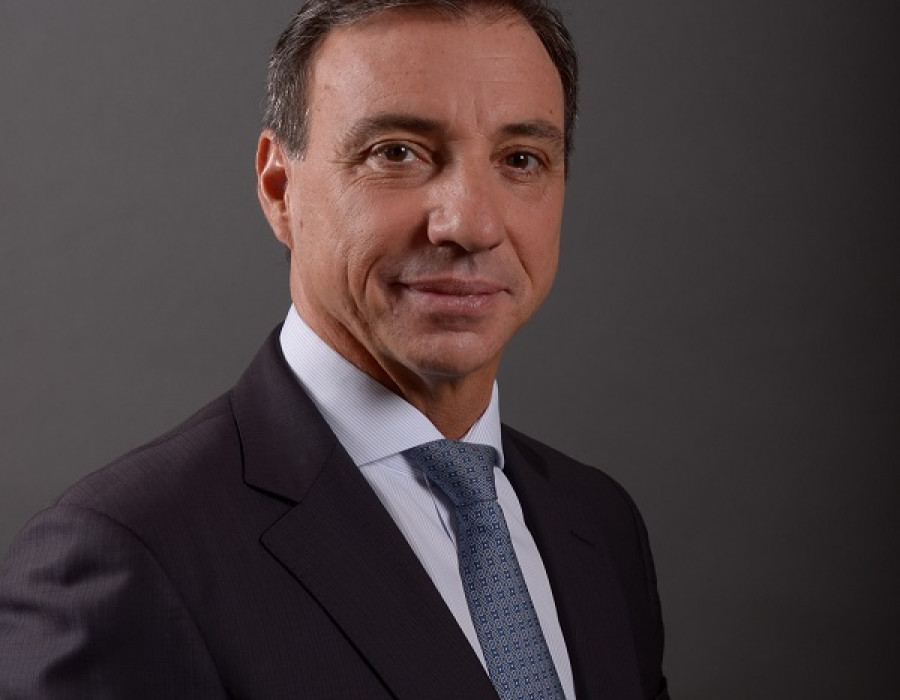R. Lazo: "Thales works on M&A initiatives to secure its future in the region"

Thales is one of the European groups that, for 50 years, has had a wide presence in Latin America. Thales participated in the 6th International Exhibition of Technology in Defense and Prevention of Natural Disasters (Sitdef 2017), held in Lima from 18 to 21 May. To know details about his participation in this important event, Infofedensa.com interviewed his vice president for Latin America, Ruben Lazo.
What does Thales search at Sitdef 2017?
Sitdef is a very important exhibition for Thales and we are proud to be present in another edition. Latin America is a priority region for Thales and contributes to the company’s global growth. We have high expectations for the region, expanding our product portfolio through key partnerships and locally production. This year Thales will bring to the show its most advanced defence solutions.
What products have you presented at the exhibition?
For Air Defence: Ground Master 40, is a 3-D long range air surveillance radar, offering detection from very high to very low altitudes. It tracks a wide range of targets from highly maneuverable tactical radar flying below several hundred feet to the unconventional small radar cross-section device as UAV or cruise missiles, ensuring an excellent global air picture; and Controlmaster 200, a system that combines high performance Ground Master 200 radar and the innovative ControlView, engagement control station. The system provides complete airspace surveillance up to a range of 250km and enhances significantly the operational capabilities.
And what about the naval area?
For Naval Defence, Thales brings to Sitdef a very interactive presentation for its navy solutions capabilities. Thales designs and delivers acoustic systems for anti-submarine warfare and anti-mine warfare. In this segment, the company offers a range of sonars such as Captas variable depth sonar family to fit on board any type of vessel, ranging from OPV and corvettes to (light) frigates and destroyers, as well as sonar suites for all types of submarines (from large nuclear submarine to the smallest platforms). In particular, Thales will showcase in Sitdef its unique planar flank array sonar, which improves significantly the performance of any submarine including U209 platforms. Thales is presenting also the Coast Watcher 100, a long-range coastal surveillance radar performing the detection and tracking of surface and low altitude air targets. With 50 years of experience in undersea warfare, Thales is recognized as an all-round leader in undersea warfare for its advanced technologies and ability to adapt to fast-changing operational contexts. The company is the major exporter of sonar and associated systems for navies and air forces.
In which Latin American countries is Thales focusing its sales strategy?
Thales has currently 18 offices and facilities in nine countries, including Peru: Argentina, Bolivia, Brazil, Chile, Colombia, Mexico, Panama and Venezuela. Thales’ organic sales grew radically in 2016 in Latin America and the company works on strategic partnerships and M&A initiatives to secure its future development in the region.
What is the company´s target?
Thales’ vision for Latam is to double its size in the region in the next five years through: improvement our geographic coverage to better serve our customers (Panama, Peru and Bolivia recently), improve products portfolio, and transfer of technology and localize our activities
And what is your strategy to reach it?
As part of its growth ambition, Thales is committed to invest in emerging markets, in particular Latin America, where the company invested over € 150 million in the last decade. Since 2015, Thales reinforced its presence in Brazil with the local production of secondary radars, the establishment of centres of excellence for radars and sonars and the implementation of a space technology centre. Besides, Thales established new offices in Panama, Peru, Bolivia, and Mexico reinforcing the investments in the regional hub for urban security and transportation in the country. In 2017, Thales will continue to invest in the region as part of its strategy for globalization, developing and extending industrial capabilities in Bolivia, Brazil, Chile, Mexico and other Latin American countries. The objective is for the Group to serve the region’s Armed Forces in partnership with the local industry, reinforcing long-term relationship with its customers.
What is Peru´s importance in that strategy?
Peru is a strategic country for Thales’ growth in Latin America, which is a trusted partner of the Peruvian Air Force (FAP) for over three decades, providing key sensors and avionics on-board Mirage 2000 aircraft. The Peruvian Navy (MGP) also uses Thales’ HF Radios for its communications.
What are your main areas of work?
With a 50-year history in Latin America in the Aerospace, Defence, Security, Space and Transportation segments, Thales has references in main national strategic programs, such as Argentina, Bolivia, Brazil, Chile, Colombia, Jamaica, Mexico, Peru and Venezuela, providing solutions spanning from air surveillance to core equipment for military platforms, satellites, smart cities, cyber security and transportation.
What can you say about the current state of the Defense and Air Traffic Control project for Bolivia?
Sidacta is the Integrated Air Defence and Traffic Control System which allows Bolivia to have, for the first time, a radar system to guard the sovereignty of its air space. Thales, that just inaugurated its offices in La Paz, is supplying 13 radars (civil and military) to the country’s aerial surveillance infrastructure. As part of the project, Thales will also deploy the TopSky-ATC system, the world’s most advanced Air Traffic Management system and Sky View Air C4I system, which provides an integrated picture of air defence operations. The project execution is progressing as planned.
Brazil and Mexico are vital for Thales in that region.
Yes, Brazil and Mexico are key countries for Thales’ growth ambitions in Latin America.
What are you working at in Brazil?
In Brazil, Thales has a strong industrial presence, through its local subsidiary Thales Omnisys, developing and producing ATC Radars (121 radars in the country representing 70 % of the market), Naval systems - including sonars and Space equipment, as well as exporting radars to countries in the Americas, Europe, Middle East and Asia. Thales also developed a full-Brazilian Seeker for the Navy MAN-SUP Programme (Surface Anti-Ship Missile) and delivered already the first three prototypes at entire customer satisfaction. All these capabilities put Brazil in a position of one of the group’s centres of excellence in high technology. Thales is proud also to be one of the main partners for Brazilian Space programmes, with significant participation in SGDC (First Geostationary Defence and Strategic Communications Satellite), CBERS and PMM Programmes either by developing and delivering Satellite (SGDC) or sub-systems such as transponders, x-band transmitters, antennas, on-board computers etc. In addition, transferring advanced technology, products and services, enables us to systematically accompany our customers in their technological development.
And in Mexico?
In Mexico, Thales is recognized as trusted supplier of urban security, transportation and air-traffic management. For airspace, Thales supplies 100 % of the Civilian Operations Control Centres in the country (four centres) and 80 % of Mexico´s Civil Air Traffic Control radars. For urban security, Thales, in partnership with Telmex, is responsible for Mexico City Ciudad Segura integrating over 15.000 video surveillance cameras to protect citizens. Under this contract, Mexico City is a worldwide reference in Urban Security project with significantly reduction of criminality.Lastly, Thales also provided the train navigation control (ATS) for 11 metro lines in Mexico City and is a leader in the toll business with 30 % market share in the country.
What are your short term goals?
We want to reinforce our commitment with the defence nations in the world that trust on our sonar solutions for over 500 warships. As well as the leadership of radars for ATM:two out of three planes around the world land and take-off with the help of Thales with references in many countries in Latin America.
What achievements would you highlight from 2017?
Finally, just remind the successful launch of SGDC (First Geostationary Defence and Strategic Communications Satellite) fully designed, developed and manufactured by Thales. This satellite will allow secure military communications as well as internet connectivity to underserved regions in the country. In addition to that, Thales is actively supporting the development of the Brazilian Space Industry by leading the Transfer of Technology (ToT) to the country which includes the training of 30 Brazilian engineers.






